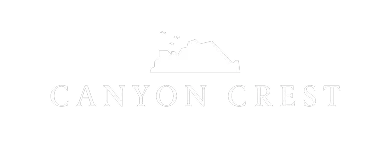Simply a smarter way to pay rent!!
Split your rent into smaller, stress-free payments today. Available for all residents.
AFFORDABLE HOUSING
Affordable Housing FAQ
 What is the low income housing tax credit program (LIHTC)?
What is the low income housing tax credit program (LIHTC)?In 1986, the federal government implemented the Low Income Housing Tax Credit Program (LIHTC), also known as the Section 42 Program in some states, to bring private sector resources to the important work of building and managing affordable housing for low and moderate income households. Rent at a LIHTC property has a rent advantage to the resident and is considered affordable housing, most often with lower rent than other neighboring properties in the area if their annual income meets requirements. In exchange for a rent advantage, owners receive a subsidy (in the form of tax credits) that offsets a portion of the building’s cost.
 Low Income Limits
Low Income Limits- Person per Household - $44,940
- People per Household - $51,360
- People per Household - $57,780
- People per Household - $64,140
- People per Household - $69,300
- People per Household - $74,460
- People per Household - $79,560
- People per Household - $84,720
Some units will have lower income limits than the limits listed on this page; please contact the property manager directly for more information
 How does the LIHTC program differ from other rental assistance programs, such as Section 8?
How does the LIHTC program differ from other rental assistance programs, such as Section 8?The LIHTC Program has a rent advantage for residents whose incomes do not exceed a certain limit. The property owner is obligated to verify income levels and eligibility annually to maintain compliance for each unit in the program. A LIHTC property’s rental rates are a specific percentage below the area median income (AMI), giving the resident a lower rent than others in the area. The Section 8 Program provides rental assistance directly to the applicant or property, depending on the program in which the applicant is enrolled. We are not based on 30% gross income that is governed by HUD.
 How does this program benefit our residents?
How does this program benefit our residents?If a household meets the resident selection criteria and the annual income is below the Maximum Income Limit, the rent amount charged is sometimes lower than that of conventional market rate apartments of comparable size and features. Many times, tax credit housing provides updated finishes and improvements that help us to lead the market in terms of what we offer residents.
 What would prevent a household from qualifying?
What would prevent a household from qualifying?- Not meeting all areas of the resident selection criteria.
- Inability to live in the unit for the entirety of the initial lease term.
- Annual household income exceeds the Maximum Income Limit during the initial qualification process.
- If all members of the household are, or become, full-time students at any time during the residency and do not meet the accepted exemptions.
- Refusal to cooperate with the income and asset verification process.
Student Exemptions are:
- A student receiving assistance under Title IV of the Social Security Act (TANF); or
- A student who was previously in the foster care program; or
- A student enrolled in a job training program receiving assistance under the Job Training Partnership Act or under the other Federal, State or local laws; or
- The household is comprised of single parents and their children and such parents are not dependents of another individual and such children are not dependents of another individual other than a parent of such children.
- The household is married and eligible to file a joint tax return.
 Is this an annual process?
Is this an annual process?You may be required to re-certify your income. Check with the community manager for the specific requirements of your community. However, you are allowed to exceed the Maximum Income Limits once initially qualified at move-in. Full time student status restrictions remain in place at all times. (Process may vary)
 What is included in the income calculations?
What is included in the income calculations?Appropriate documentation of all income sources must be provided. Income sources include but are not limited to:
- Child Support / Social Security
- Wages or Bonuses / Tips or Commissions
- Monetary Gifts / Unemployment
- Income from Assets and Investments
 How are income and rent limits determined?
How are income and rent limits determined?The income limits for our community are based on the Area Median Income for the geographic area. This is evaluated by HUD and may change from year to year based on how the economy is performing. The rents are determined based on the number of bedrooms, not the number of occupants. Tax Credit apartments have rental rates based on a percentage of the area median gross income, resulting in eligible residents paying a lower percentage of rent than at a conventional property.
 How often will my rent change?
How often will my rent change?Unlike a conventional market rate community where rent is evaluated at the expiration of a Lease, HUD releases new income and rent limits for Tax Credit Housing around the same time each year. Your rent may increase annually based on the new income and rent limits, and this increase may not coincide with your Lease expiration. Rent increases may occur more frequently due to factors outside of new rent and income limits. Please check with the Community Manager for more information.
Amenities
Apartments
-
2, 3 & 4 Bedroom Apartments
-
Walk-in Closets*
-
Washer/Dryer in Every Unit
-
Upgraded Internet Cable
-
Stainless Steel Appliances
-
Ice Maker
-
Pet-Friendly*
Community
-
Resort-Style Pool & Cabanas
-
Gate Access
-
Business Center
-
Fitness Center Collection
-
On-site Maintenance / Management
-
Covered Parking
-
Elevators
We use cookies to give you the best user experience.











